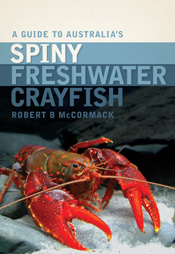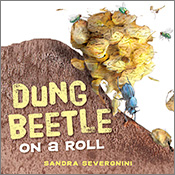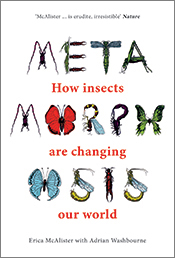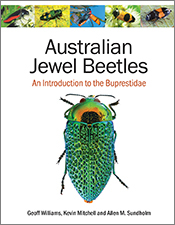A Guide to Australia's Spiny Freshwater Crayfish

By: Robert B McCormack
Covers 50 species of Euastacus Crayfish found in Australia, the largest of the 10 genera of Australian freshwater crayfish.
Referred to as the 'Spiny Crayfishes' due to impressive arrays of spines on their hard armoured shells, Euastacus crayfish are the largest of the 10 genera of Australian freshwater crayfish. This book discusses 50 species found in Australia, from the iconic giant Murray lobster that is fished by recreational fishers, to the exceedingly rare and tiny species Euastacus maidae. + Full description
These uniquely Australian species range from Cooktown in far north Queensland to Wilsons Promontory in Victoria. Many are found in or around our major population areas. The book discusses basic crayfish anatomy, moulting and growth, morphology, breeding, threats and diseases. It includes colour photographs for each species, as well as a glossary and further reading list.
A Guide to Australia’s Spiny Freshwater Crayfish will be of interest to researchers, conservationists, land managers, libraries and crayfish enthusiasts.
- Short descriptionNews
2013 Whitley Award Commendation for Invertebrate Guide
This title is no longer available in print format, but can still be purchased as an eBook via the eRetailer links above.
Reviews
"This book covers a lot and fills a gap for an important and charismatic group of endemic Australian crustaceans and for these reasons it is to be recommended."
Gary CB Poore, The Victorian Naturalist, pp. 60-61, Vol 130 (1) 2013
"...has good clear photos, most of them taken by the authors themselves, indicating a serious commitment to travel to remote regions ...had me itching to get out and see more of these animals in the wild."
Tim Low, Wildlife Australia, Autumn, pp.45-46, 2013
"This excellent new book from CSIRO PUBLISHING makes a great leap forward towards introducing these beautiful and significant invertebrates to Australians and in doing so, I hope, igniting community conscience for the need to better conserve this unique biodiversity in the face of the multiple threats it currently faces."
Jonathan Marshall, Metamorphosis Australia, December 2012
"This colourful and comprehensive introduction to the spiny crayfish is an essential for any conservationist, freshwater ecologist, and land manager"
Susan Lawler, Freshwater Science, volume 32, page 1054
Details
ePDF | July 2012ISBN: 9780643103870
Publisher: CSIRO Publishing
Available from eRetailers
ePUB | July 2012
ISBN: 9780643103887
Publisher: CSIRO Publishing
Available from eRetailers
Features
- Concise information to identify the species in their area.
- Covers 50 species in Australia.
- Quality colour photographs of all species, many of which have never been photographed before.
Contents
PrefaceAcknowledgements
Freshwater crayfish of Australia
Genus Euastacus
Identification of crayfish
Giant spiny crayfish
Intermediate spiny crayfish
Dwarf spiny crayfish
Species group distributions
Major groups and morphological features
Habitat and distribution
Population densities and distributions
Basic anatomy
Exoskeleton
Cephalothorax
Legs
Gills
Abdomen
Internal anatomy
Euastacus crayfish morphology
Moulting and growth
Breeding
Approximate natural distributions of the Euastacus species
Species descriptions
New species
Threats to Euastacus
Recreation fishing
Illegal fishing
Climate change
Habitat alteration
Exotic species
Conclusion
Diseases and ectocommensals
Glossary
References and further reading
Index








